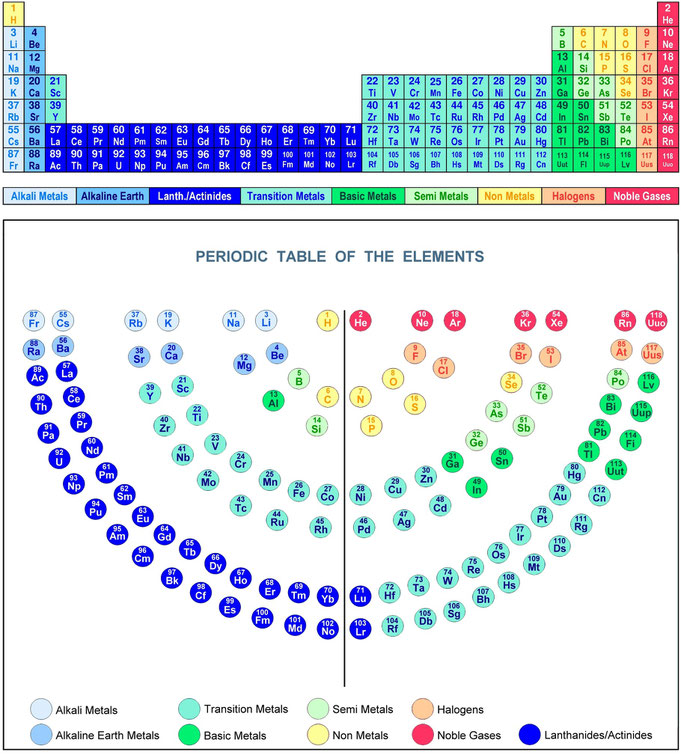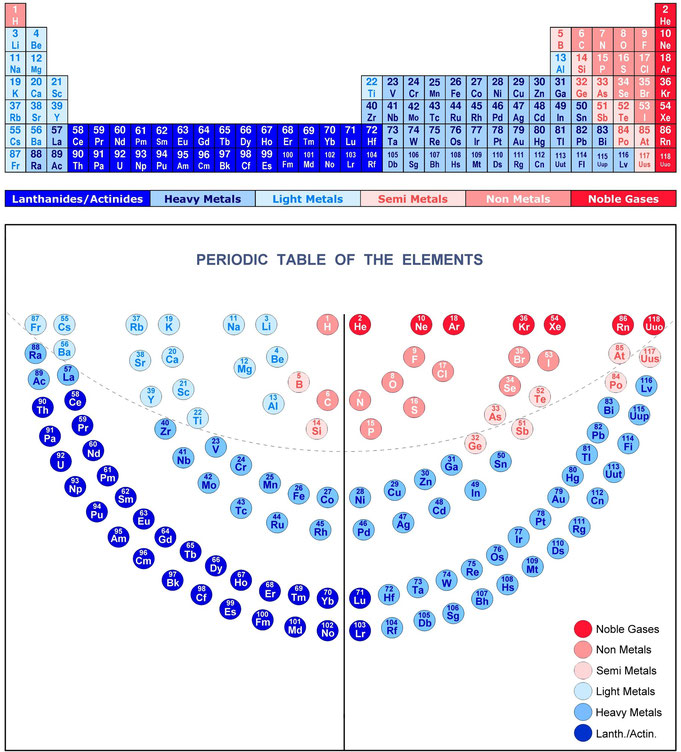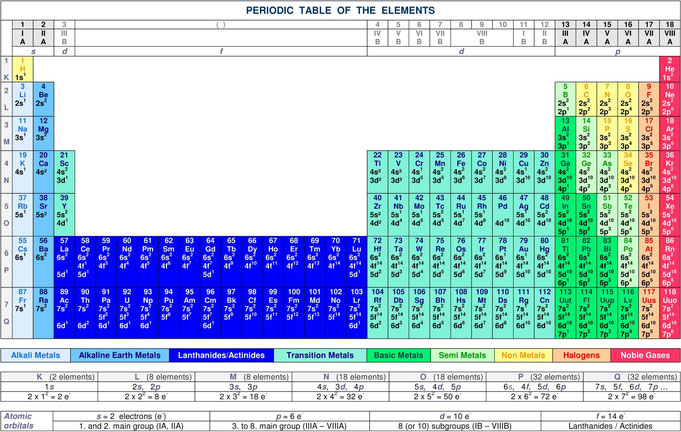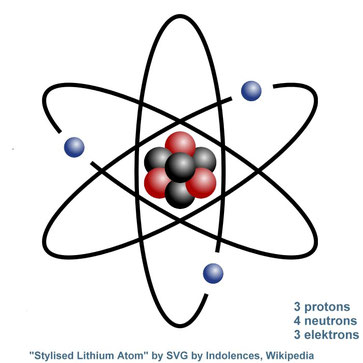The Periodic Table of the Elements
The Arrangement of the Elements on the Periodic Table
What is the universe made of? What is the earth made of? And what are the bodies of human beings made of? All visible and invisible matter is made of the chemical elements. Chemists display them in the so-called "periodic table", a logical arrangement of all elements:
Step 1: The sequence of the elements is determined by the number of protons in the nucleus (=atomic number, =proton number). This creates a long sequence of elements with a total of 118 elements. The first element is hydrogen (1 proton), the second element is helium (2 protons), the third element is lithium (3 protons) etc.:
Step 2: The groups of elements are determined by the number of electrons and thus the structure of the respective electron shell. Elements with similar chemical characteristics are arranged in groups. There are 7 rows (= periods with the 7 fundamental electron shells K/L/M/N/O/P/Q) with the 8 main groups (blue), 8 secondary groups (red) and the lanthanides / actinides (purple; 4-8 sub-groups):
Step 3: The unification of the elements results when all the elements with similar chemical and physical characteristics are arranged as closely together as possible. We automatically get a semi-circular representation with seven arms:
The representation we get after these three steps is reminiscent of a menorah, the biblical seven-branched lamp. Note: But this is according to the Bible not the lampstand of the Jews, but the lampstand
of God, for all the peoples who want to go the way of God. Examples: Historical menorah images.

In the following images the elements are grouped by their chemical and physical characteristics and identified by color. The images may be used and
published for non-commercial purposes only.
Grouping of the Elements on the Periodic Table
Grouping of the Elements by Metallic Characteristics
Electron Configuration
Atoms and Orbitals: The Clouds of the Electrons. s, p, d, f - Orbitals
Atom Model on the Example Lithium
Shell Occupation of the Elements
Atomic Mass of Elements
Periodic Table of the Elements - Menorah Display
Download
Illustrations of the Periodic Table of Elements

Periodic Table - Metallic properties - Menorah View
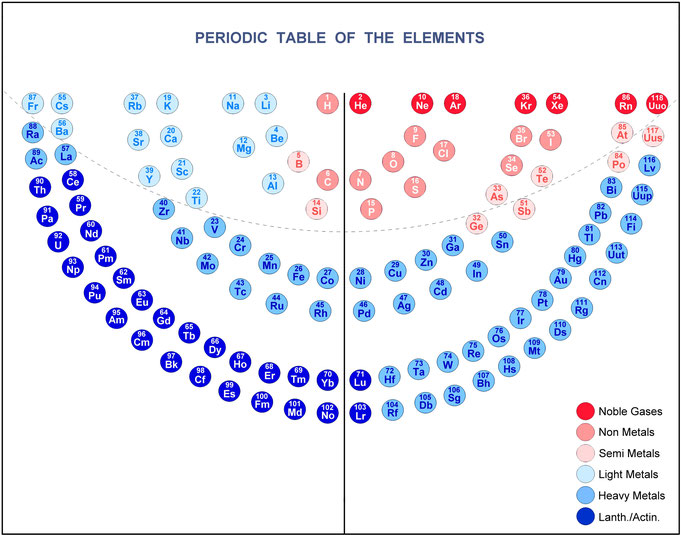
Periodic Table - Traditional View with Menorah Figure

Metallic Properties of the Chemical Elements




